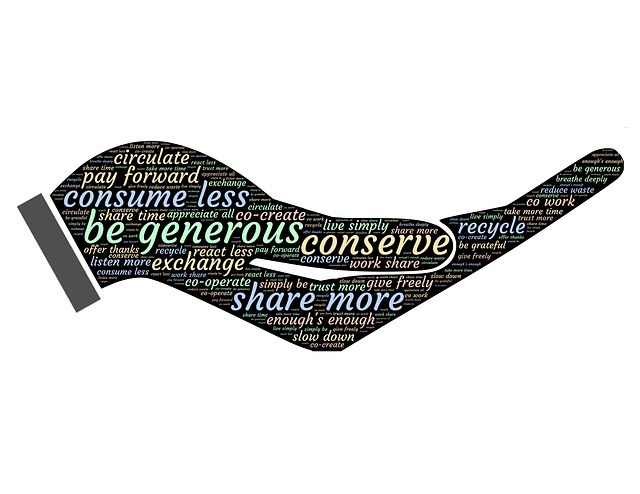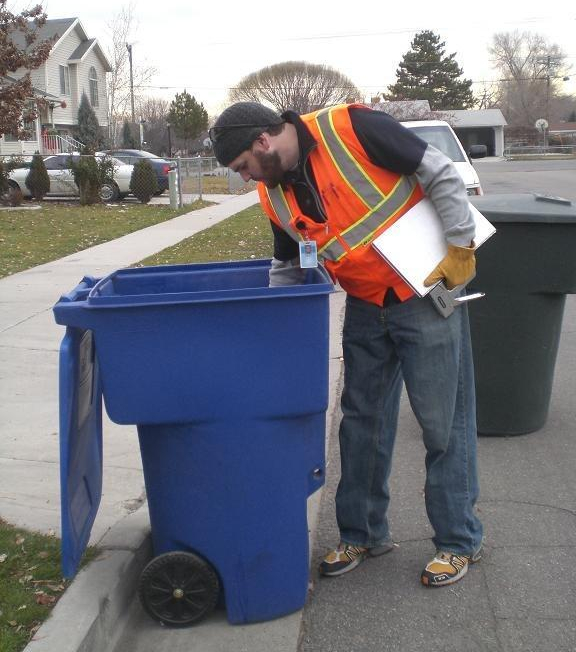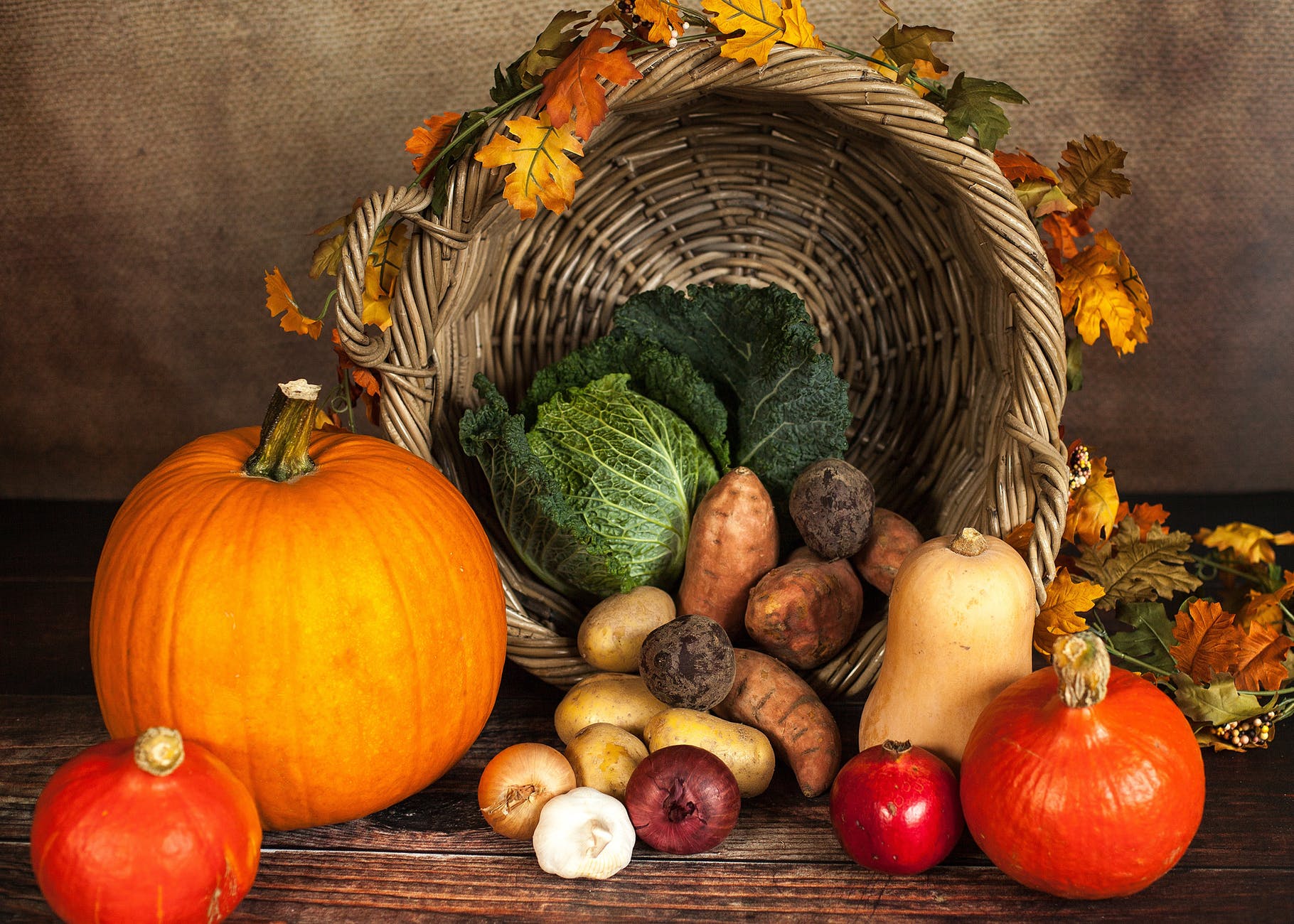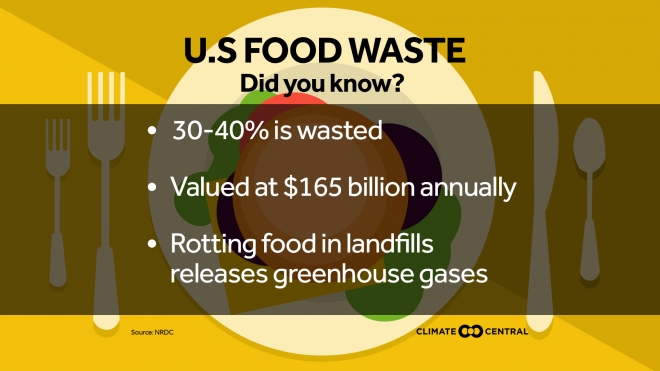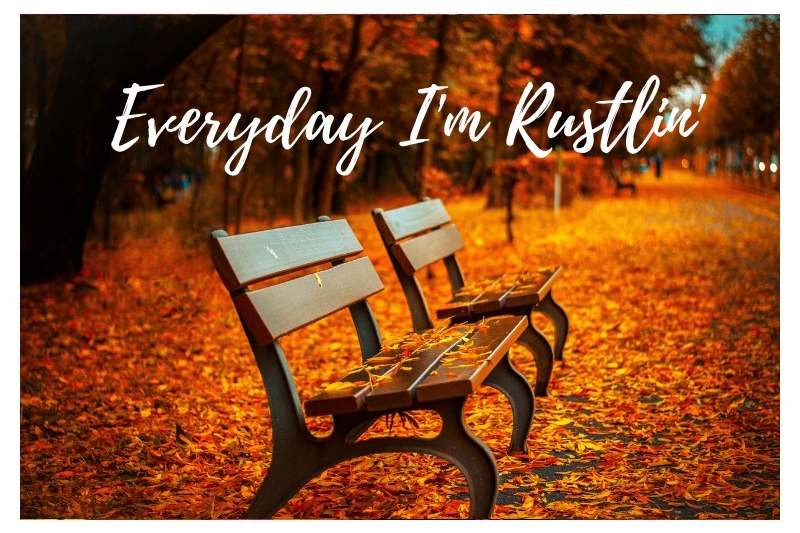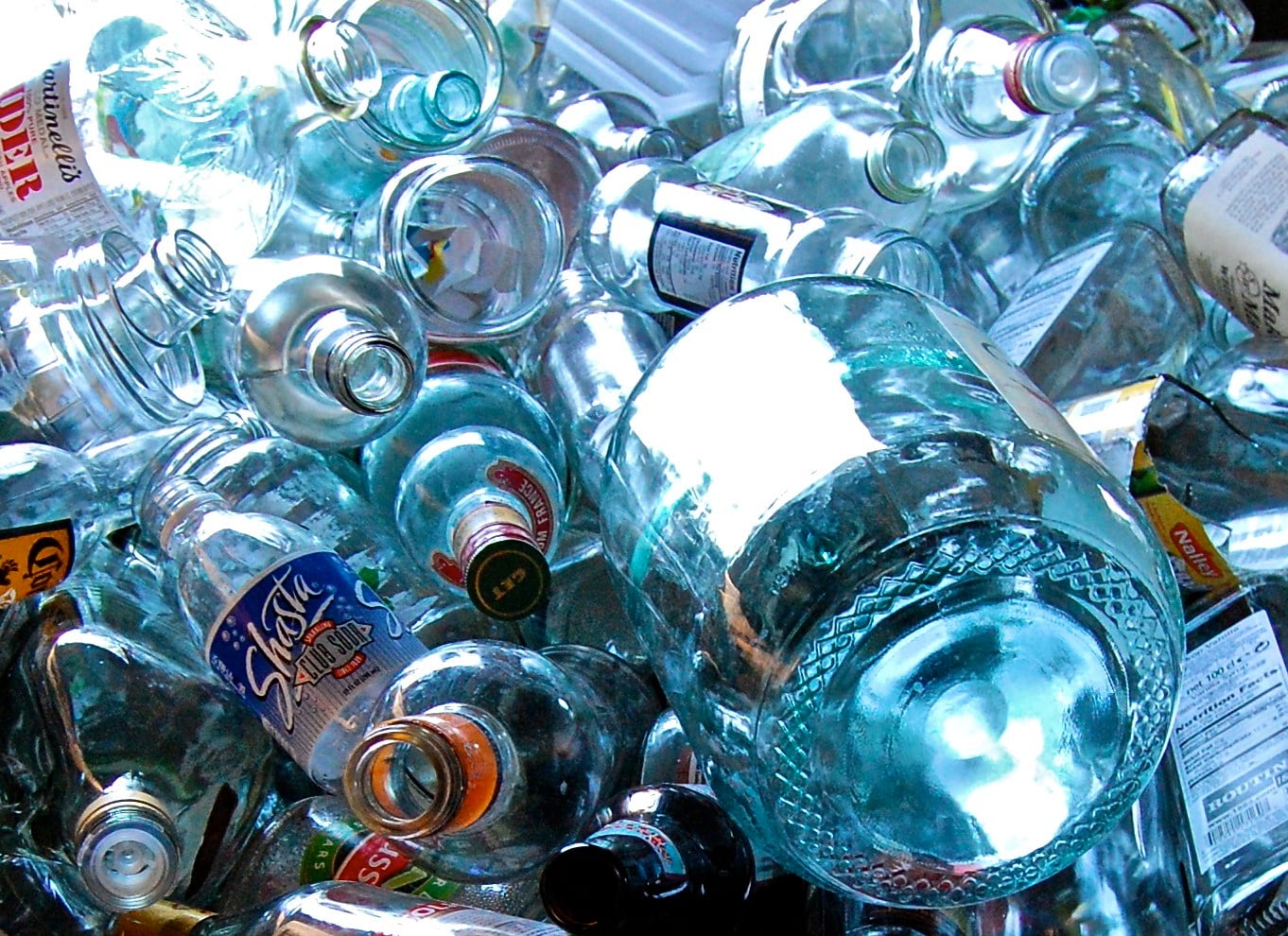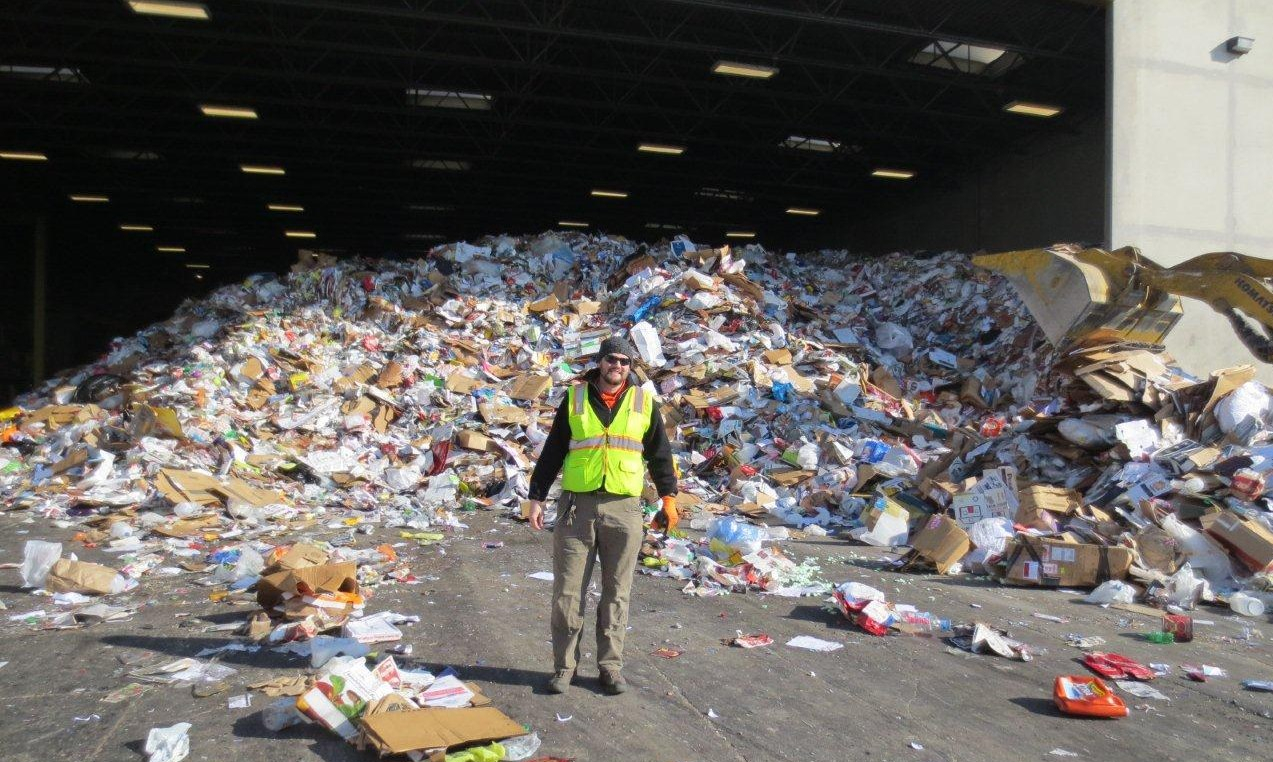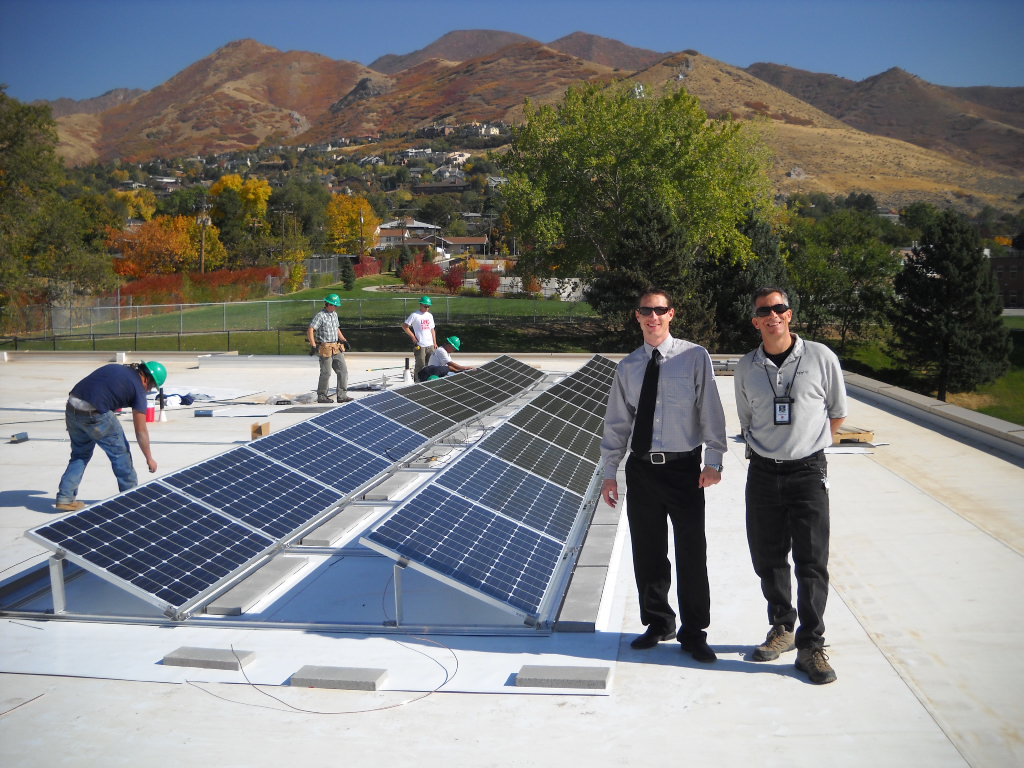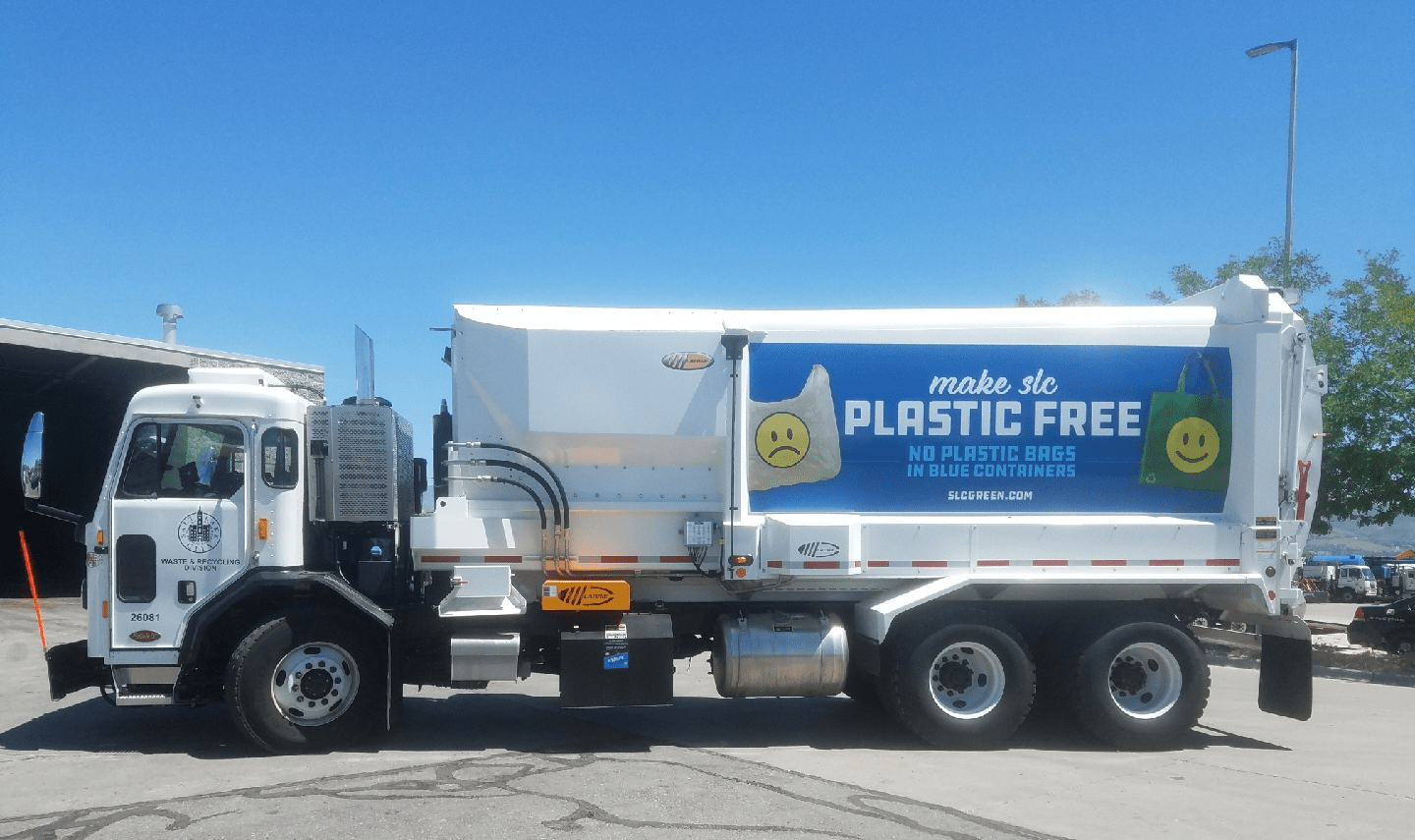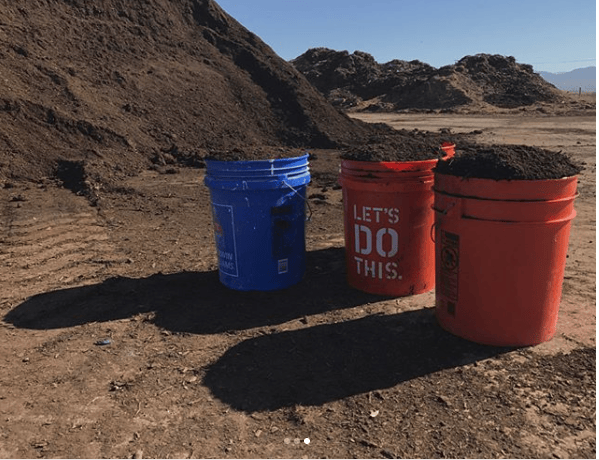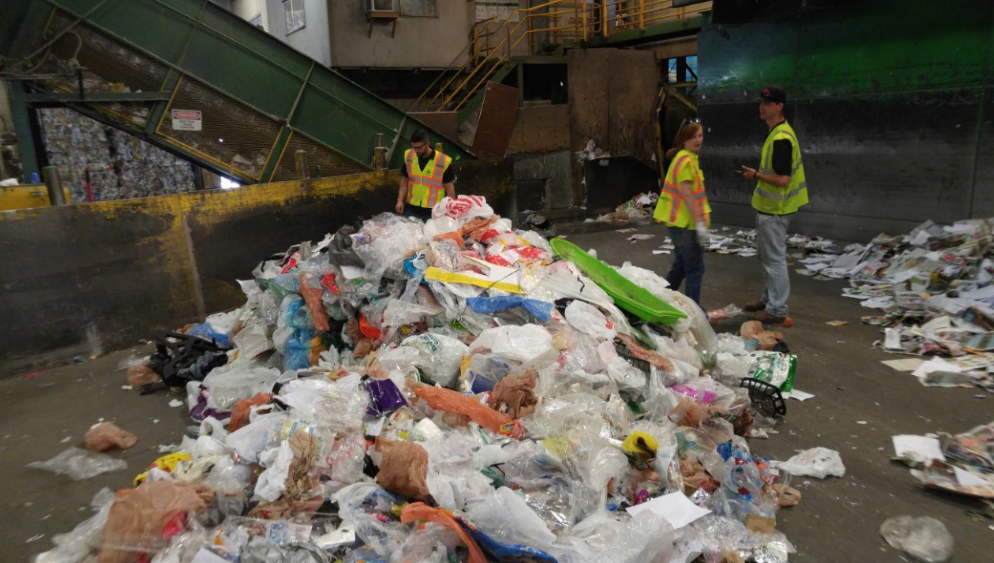By Ardyn Ford, SLCgreen intern
Welcome to SLCgreen Connections, an occasional series highlighting SLCgreen’s fantastic local partners—the people and organizations with whom we work closely to make Salt Lake City a greener, more vibrant, and sustainable city!
Greg Libecci of the Salt Lake City School District chronicles some of the achievements he’s helped realize after nine years as the Energy and Resource Manager for dozens of schools. His work led to the school district receiving a 2015 Mayor’s Skyline Challenge Award from Salt Lake City. Thanks for all you do Greg!

Greg Libecci, right, stands near solar panels being installed at Hillside Middle School in Salt Lake City.
School’s out this week, but that doesn’t mean Greg Libecci takes the summer off.
His role as Energy and Resource Manager means he works year-round to identify and implement energy efficiency projects to save the Salt Lake City School District energy and money.
What led him to this role?
After several years of working in corporate sales for a telecom company, Greg began to notice energy waste everywhere. Things that were not being used were often left on, racking up unnecessary expenses and negatively impacting the environment.
He was certainly on to something with these observations, since the excessive consumption of energy resources worldwide is recognized as an important contributor to climate change.
Greg was drawn into the sustainability field because he saw how simple it could be to prevent unnecessary energy use. He was excited by the solvable nature of the problem.
When the Salt Lake City School District (SLCSD) created the Energy and Resource Manager position nine years ago in an effort to save the District money on utility costs, it seemed like the perfect opportunity for Greg to pursue his newfound passion for energy conservation.
Not only would he have the opportunity to directly implement important sustainability initiatives at a large organization, but he would also have the chance to work with students, something that remains an extremely rewarding part of his job.
Since Greg took the position, the school district has seen huge reductions in energy and natural gas use. In comparison with their baseline year of 2009, 2017 saw an 11% decrease in electricity use and a 23% decrease in natural gas usage.
This translates to a 4,400 ton reduction of CO2 emissions for 2017! Continue reading →
